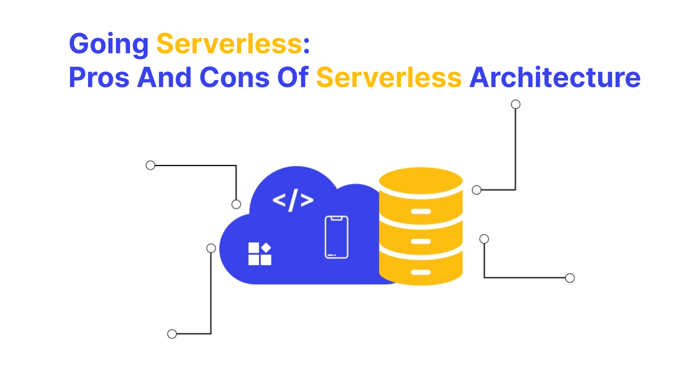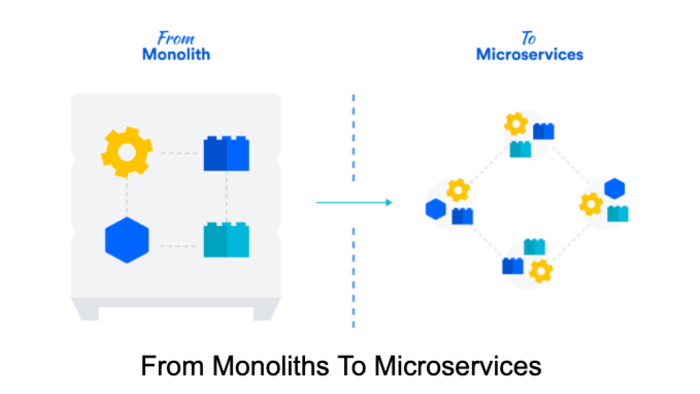Learn tips on how to improve code quality in project development using best practices.
With the rate at which innovation and efficiency are paramount in software development, the quality of code can be the deciding factor between success and failure. Imagine you are part of a skilled development team, working tirelessly to bring a new software product to life. As deadlines loom and pressure mounts, you encounter a range of challenges, from unforeseen errors to time-consuming code revisions. Frustration builds up as you deal with the repercussions of poor code quality, which leads to a chain reaction of setbacks and issues.
High-quality code is the foundation of any successful software development. The effort put into maintaining optimum code quality determines the software's credibility, performance, resilience and scalability.
In the article, we will discuss the importance of sticking to best practices, such as coding standards, automated testing, code reviews and documentation. You can streamline development processes, eliminate risks, and verify that your code satisfies industry standards by incorporating these techniques into your workflow.
Let's explore the most effective ways of improving code quality in project development.
What is the Essence of Best Practices in Software Development
Best practices in software development are guiding principles that help developers write high-quality code and build durable software solutions. These practices cover a wide range of techniques, methodologies, and standards that are widely accepted, tested and proven to work in the software industry.
At its core, best practices in software development aim to ensure that the code created is dependable, manageable, and efficient. They provide developers with a set of rules and guidelines to follow during the software development lifecycle(SDLC). Following these guidelines can yield many benefits that have a significant impact on code quality and software products as a whole.
Improved productivity is one of the key benefits of following best practices. These strategies provide a systematic approach to development, facilitating workflows and reducing the chances of errors. By using industry-recognized methodologies like Agile or Scrum, teams can effectively manage projects, prioritize tasks, and deliver software on schedule.
Another significant benefit of following best practices is easier collaboration among team members. By adopting standardized guidelines, developers can work seamlessly together, regardless of their roles or responsibilities. Consistent coding styles, documentation formats, and version control practices enable effective communication, code sharing, and troubleshooting.
The Role of a Developer in Maintaining Code Quality
Developers are the knights in the chess of code quality maintenance, they play an essential role in maintaining code quality throughout the software development process. They are in charge of tasks such as writing clean and readable code that satisfies the project's requirements, testing and documentation.
Let’s take a close look at some responsibilities of developers in software development.
- Writing clean, readable, and maintainable code: Developers must prioritize writing code that is easy to understand and maintain. This involves using meaningful variable and function names that accurately describe their purpose. For example, instead of using cryptic names like
xyz123()or abbreviations, developers should go for descriptive names likegetUserData(). Clear and concise comments should also be included to explain the logic and purpose of the code. Also, structuring the code in a logical and organized manner, following established coding conventions and style guides, ensures consistency and readability. - Staying updated with industry standards, frameworks, and technologies: In the rapidly growing industry of software development, developers must stay current on industry standards, frameworks, and technologies. They should actively seek for opportunities to learn and grow. Developers can capitalize on new features and modifications in programming languages and frameworks by keeping up with new releases and updates. They should also spend time learning about best practices and design patterns that are relevant to their work, for instance by reading articles like this one.
- Collaboration: Developers should have a growth mindset and be committed to continuous learning and improvement. Seeking feedback from peers and senior developers is crucial in identifying areas for improvement. Developers can learn from others, gain insights, and ensure compliance with coding standards by actively participating in code reviews. Pair programming sessions promote collaboration and allow developers to learn from others in real time. They facilitate knowledge sharing, problem-solving, and mutual learning.
- Debugging and testing: Debugging and testing are essential for maintaining code quality. Before deploying to production, developers should do extensive debugging and testing to discover and fix errors. To ensure the correctness and reliability of the code, unit tests, integration tests, and other types of automated tests should be written. Developers can use automated testing frameworks and technologies to streamline the testing process and detect mistakes early.
- Documentation: Documentation is necessary for maintaining code quality and facilitating future maintenance. Developers should create clear and concise documentation that explains the purpose, inputs, and outputs of functions and programs. This documentation serves as a reference for other developers who may need to work with the code in the future. By creating comprehensive documentation, developers enable smooth knowledge transfer and collaboration within the team. Documenting code also helps developers understand the rationale behind design decisions and assists in identifying potential areas for improvement. A comprehensive documentation acts as a guide for maintaining code quality over time and ensures that the codebase remains understandable and maintainable.
The combination of writing clean and readable code, staying updated with industry standards, continuous learning and improvement, testing and debugging, and thorough documentation creates a foundation for high-quality code and promotes effective collaboration among developers.
Implementing Version Control for Efficient Project Management
Implementing version control systems is crucial for efficient project management and maintaining code quality. Version control allows developers to track changes, manage codebase versions, and collaborate seamlessly with team members. One of the most widely used version control systems is Git, known for its robustness and flexibility.
** Get started with version control using GIT - HERE
Git enables developers to create branches, make modifications, and merge changes back into the main codebase easily. It provides a centralized repository where all project files and their revisions are stored, allowing for a comprehensive history of code changes. This history facilitates tracking modifications, identifying bugs, and rolling back to previous versions if necessary.
Aside from Git, there are other version control systems like Mercurial SCM, SVN(Apache Subversion) and Fossil, although they are not as popular as Git.
To effectively utilize version control, developers should adhere to best practices. This includes creating meaningful commit messages that describe the purpose of the changes, using branching strategies like feature branches or release branches to isolate work, and regularly pulling the latest changes from the repository to stay updated with the team's progress. By following these practices, developers can maintain a clean and organized codebase, avoid conflicts, and ensure smooth collaboration within the team.
Version control systems enable collaboration between team members. Multiple developers can work on the same project simultaneously, and version control helps merge their changes seamlessly. It provides features like pull requests, code reviews, and conflict resolution, facilitating effective teamwork and reducing the chances of introducing errors into the codebase.
Continuous Integration and Automated Testing for Reliable Code
Continuous integration involves frequently merging code changes from multiple developers into a shared repository. This process allows teams to detect and address integration issues early on, ensuring that the codebase remains stable and consistent. Developers may find issues, resolve them quickly, and maintain a clean and functional codebase by automating the deployment process.

Automated testing is essential for evaluating code changes and guaranteeing a dependable software. Developers can use automated testing to create test cases that simulate real-life circumstances and validate the behavior and functionality of their code. When code changes are made, automated tests can be executed automatically, providing quick feedback on the impact of those changes.
Popular CI/CD systems such as Jenkins, Travis CI, and CircleCI make continuous integration easier to implement by automating the build, test, and deployment processes. These tools work with version control systems and can run automated tests to ensure that code changes match preset quality criteria before they are merged into the main codebase.
JUnit, NUnit, and Selenium testing frameworks enable developers to write extensive test cases that cover different components of the software. These frameworks offer several types of testing, such as unit tests, integration tests, and end-to-end tests, allowing for broad code validation.
Collaborative Development and Code Review Processes
Collaboration among developers is another important factor for ensuring that code satisfies quality standards and is in sync with project requirements. Developers may improve the codebase by leveraging their collective experience, sharing insights, and providing meaningful comments. Collaboration fosters a sense of ownership and accountability, which leads to higher code quality and overall project success.
Code reviews are a necessity in collaborative development. They involve the systematic examination of code by peers or experienced developers to identify potential issues, provide feedback, and ensure adherence to coding standards. Code review tools and techniques facilitate this process by automating the review process and providing a structured framework for evaluation.
Reviewers should give constructive feedback, identify areas for improvement, and suggest different approaches. They should evaluate the code in terms of readability, maintainability, performance, and compliance with coding standards. Also, code reviews should be performed on a timely basis to ensure that issues are resolved as soon as possible and to minimize the impact on the project's timeline.
Code review tools, such as GitHub's pull requests, Gerrit, or Phabricator, make the review process more efficient by providing a forum for reviewing and debating code changes. These technologies allow reviewers to leave comments, suggest improvements, and participate in meaningful discussions, boosting team engagement and knowledge sharing.
Strategies for Code Reusability and Modular Development
The process of designing and implementing code in a way that allows it to be used in different parts of an application or even across separate projects is referred to as code reusability. This method reduces duplication, enhances uniformity, and improves development efficiency. Developers save time and effort by reusing code rather than starting from scratch.
Modular development involves breaking down complex systems into smaller, independent modules. Each module focuses on a specific functionality or task and can be developed, tested, and maintained independently. This approach enhances code maintainability, as changes in one module have minimal impact on other parts of the system. Oftentimes, modules can be reusable - thereby not only breaking down complex systems but also reducing code repetition.
To achieve code reusability and modularity, developers can employ various techniques and best practices. Abstraction allows hiding implementation details and exposing only relevant interfaces, enabling easier reuse and minimizing dependencies. Encapsulation involves bundling data and behavior within classes, promoting encapsulated functionality that can be reused throughout the codebase.
Design patterns provide proven solutions to common software development problems, aiding in code reusability and modular design. Patterns like the Factory pattern, Singleton pattern, and Observer pattern offer standardized approaches to solving specific challenges and encourage reusable and modular code structures.
When creating reusable and modular code, developers should strive for loose coupling and high cohesion. Loose coupling minimizes dependencies between modules, making them more flexible and interchangeable. High cohesion ensures that each module has a clear and focused purpose, enhancing readability and maintainability.
Testing and Quality Assurance in Code Development
Testing and quality assurance are essential pillars of code development that contribute significantly to overall software quality and reliability. Throughout the software development process, various types of testing such as unit testing, integration testing, and system testing are carried out.
Individual components or parts of code are tested to ensure they work properly in isolation during unit testing. Integration testing focuses on verifying the interaction and compatibility of different components when combined. System testing evaluates the entire software system to ensure it meets the specified requirements and functions as intended in real-world scenarios.
Quality assurance encompasses a range of processes and methodologies that aim to improve and maintain code quality. It involves establishing quality standards, implementing quality control measures, and performing regular audits to assess compliance. Quality assurance also includes activities such as code reviews, documentation reviews, and adherence to coding standards to ensure consistency and maintainability.
Developers can use a variety of tools and frameworks in testing and quality assurance. JUnit, NUnit, and Selenium testing frameworks provide an organized approach to authoring and executing tests. Test automation technologies aid in the automation of repetitive operations, reducing human error, and enhancing productivity. Tools like SonarQube or ESLint can be used for code analysis to uncover potential code errors and enforce coding best practices.
Debugging Techniques and Tools for Effective Troubleshooting
When it comes to identifying and fixing bugs in code, software developers must be able to debug. To quickly isolate and address problems, effective troubleshooting requires a systematic approach as well as the use of appropriate tools and procedures.
To begin, developers should follow a methodical debugging strategy. This involves completely understanding the problem, recreating it, and collecting relevant data such as error messages, logs, and feedback from users. Developers can narrow down the potential causes and focus their efforts on the most likely places by meticulously reviewing the code and the specific circumstances that result in the issue.
There are several debugging tools available to help developers with troubleshooting. Integrated development environments (IDEs) frequently include debuggers that include features such as breakpoints, watch expressions, and step-by-step execution. Developers can use these tools to pause code execution at specific instances, analyze variables, and trace program progress. Logging frameworks and error-tracking systems also provide valuable insights into the behavior of the application and aid in the identification of recurring issues.
When debugging, it is important to isolate the problem by utilizing techniques such as divide and conquer or binary search. This involves systematically eliminating potential causes by narrowing down the code sections or inputs that contribute to the issue. Developers can leverage techniques like logging, unit testing, and regression testing to isolate problematic areas and validate code changes.
Documentation
Documentation is essential in software development because it provides valuable details and information about the codebase. It serves as a reference for developers, encourages teamwork, and guarantees the project's long-term viability.
First and foremost, documentation improves code quality by improving readability and comprehension. Well-documented code is easier to understand, which saves developers time and effort when navigating and working with it. Code comments, for example, aid in explaining the purpose of individual functions, classes, or blocks of code, providing details about their intended behavior and usage. Clear and succinct comments can considerably improve code readability, making it more maintainable and reducing the risk of creating issues during future modifications.
Other forms of documentation, in addition to code comments, are also significant. README files, for example, include important details about the project, including its dependencies, installation instructions, and usage examples. These files serve as a guide for developers who are new to the project or need to come up to speed quickly. API documentation is essential for libraries and frameworks because it describes the interfaces and functionality available to other developers. APIs that are well-documented make it easier for developers to integrate and use external components successfully.
When it comes to developing documentation, following best practices is essential. Documentation should be concise, precise, and up-to-date. It should reflect the current version of the codebase accurately and include meaningful explanations and examples. Using consistent formatting and following a standardized documentation style can also contribute to the overall readability and professionalism of the project. Documentation should be treated as a living artifact which should be regularly reviewed and updated as the codebase evolves.
Conclusion
To achieve optimal code quality, developers should continuously learn and stay updated with evolving technologies and methodologies. It is important to embrace a culture of continual improvement and knowledge sharing while developing reliable and successful software solutions.
Last but not least, implementing best practices for improving code quality is an essential part of effective project development. Developers can deliver high-quality software solutions that fulfil user expectations, avoid errors, and offer efficient maintenance and future modifications by applying these techniques.
The next stage is to prioritize code quality and follow the best practices discussed in this article. By investing in code quality, developers contribute to the success of their projects and enhance their professional growth. Continuously seeking opportunities to improve code quality will lead to more robust and reliable software solutions in the ever-evolving landscape of project development.
Akava would love to help your organization adapt, evolve and innovate your modernization initiatives. If you’re looking to discuss, strategize or implement any of these processes, reach out to [email protected] and reference this post.





